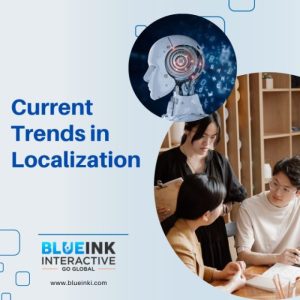Introduction
In our intricately connected global landscape, the demand for comprehensive language services has never been more pronounced. These services are pivotal in bridging communication gaps, fostering cross-cultural understanding, and enabling businesses and individuals to thrive in a multilingual environment. Let’s delve into the rich tapestry of language services, exploring their nuances, applications, and the value they bring to various sectors.
Translation Services
The Art of Linguistic Precision
Translation is the cornerstone of language services, entailing the conversion of written text from one language to another. It’s a meticulous process that demands not only linguistic skills but also an in-depth understanding of the subject matter. Translators must navigate idiomatic expressions, cultural references, and industry-specific terminology to produce translations that are both accurate and resonate with the target audience.
Some Applications:
- Legal and Medical Documents: Precision is paramount, as any misinterpretation can lead to serious consequences.
- Technical Manuals: Detailed understanding of technical jargon is crucial for accurate translation.
- Literary Works: Capturing the essence, style, and tone of the original text is essential.
Localization Services
Tailoring Content to Global Audiences
Localization extends beyond basic translation, adapting content to suit the cultural and functional expectations of a specific target market. This involves considering local customs, cultural nuances, and even regulatory requirements, ensuring that the product or content feels native to the region.
Some Applications:
- Software Localization: Adapting software interfaces and help files to align with local languages and cultural norms.
- Website Localization: Ensuring websites cater to local preferences to enhance user experience and engagement.
- Video Game Localization: Modifying content, visuals, and gameplay to resonate with players from different cultural backgrounds.
Interpretation Services
Facilitating Verbal Communication Across Languages
Interpretation involves the real-time translation of spoken language, requiring interpreters to possess not only fluency in multiple languages but also the ability to quickly and accurately convey messages between parties.
Some Applications:
- Conferences and Seminars: Providing real-time language support for international attendees.
- Business Meetings: Enabling clear communication between stakeholders from different linguistic backgrounds.
- Legal Proceedings: Ensuring all parties fully understand the proceedings, regardless of the language spoken.
Transcription Services
Converting Spoken Words into Written Text
Transcription services involve listening to audio recordings and converting them into written form, a process that can also include the translation of the spoken content into another language.
Some Applications:
- Academic Research: Transcribing interviews or lectures for analysis or publication.
- Legal Transcripts: Creating official records of court proceedings, depositions, and testimonies.
- Media Production: Developing written content for films, television, and online media for subtitling or dubbing.
Transcreation Services
Creative Adaptation for Marketing and Advertising
Transcreation goes beyond direct translation, creatively adapting a message to capture its emotional intent and appeal, ensuring it resonates with the target audience. This service is particularly crucial in marketing and advertising, where brand identity and the subtleties of messaging play a significant role in audience reception.
Some Applications:
- Advertising Campaigns: Tailoring marketing messages to fit the cultural and emotional landscape of the target market.
- Brand Localization: Adapting a brand’s voice and identity to align with local expectations and preferences.
- Multimedia Content: Creating culturally relevant content for various platforms, from print to social media.
Machine Translation Post-Editing and AI translation
Combining AI Efficiency with Human Expertise
Machine translation post-editing is a hybrid approach that leverages the speed of AI-driven machine translation while incorporating the nuanced understanding of a human editor to refine and polish the translated text, ensuring its accuracy, coherence, and cultural appropriateness.
Some Applications:
- E-commerce Listings: Quick translation of vast product inventories with human oversight to ensure accuracy.
- Technical Documentation: Rapid initial translation of manuals and support materials, followed by human refinement.
- Content Localization: Swift translation of large volumes of content with subsequent human editing to ensure quality and relevance.
Key Takeaways
Choosing the appropriate language service is crucial and should be guided by the specific needs of the project, the intended audience, and the importance of cultural nuances. Whether it’s translating a novel, localizing a marketing campaign, or transcribing legal proceedings, each service offers distinct benefits and is suited to different objectives.
In our globalized world, the ability to communicate effectively across language barriers is indispensable. Language services not only facilitate this communication but also enrich it, ensuring that messages are not just translated but truly understood and appreciated, regardless of the linguistic or cultural backgrounds of the audience. By leveraging these diverse services, businesses, creators, and individuals can ensure that their messages are heard, their content is accessible, and their offerings are relevant across the vast tapestry of global languages and cultures.



